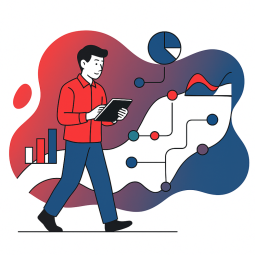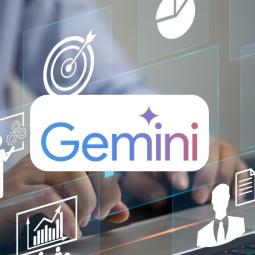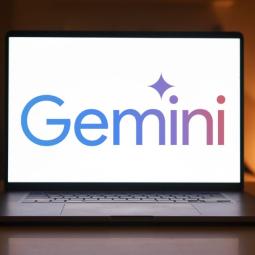If the idea of artificial intelligence (AI) makes you uneasy, you’re not alone. Many people worry that AI might take over their jobs, widen the digital skills gap, or even make the workplace feel less human. But here’s the truth: AI isn’t here to replace you—it’s here to help you shine. For not-for-profits, this can be a potentially low-cost option to provide a real boost to productivity.
This comprehensive guide is designed for beginners who want to learn about AI at their own pace. Whether you’re sceptical about its benefits or unsure where to start, we’ve curated resources and real-world examples to help you see AI not as a threat but as a tool for growth.
1. Understanding AI: What It Is and What It Isn’t
AI can sound intimidating, but at its core, it’s just a set of tools designed to mimic human decision-making and problem-solving. Think of it as a highly specialised assistant that can analyse data, automate repetitive tasks, and even generate creative content.
-
Article: What Is AI? A Beginner’s Guide
2. Save Time and Focus on What Matters
One of AI’s greatest strengths is its ability to handle time-consuming tasks. From managing your inbox to scheduling meetings, AI tools can help you reclaim hours every week. This means you can spend more time with clients, customers, or the strategic parts of your role that truly make a difference.
Practical Tools to Explore:
-
Grammarly: Automate proofreading and get suggestions to improve your writing. Learn More
-
Calendly: Automate meeting scheduling based on availability. Read How It Works
3. AI as a Career Partner, Not a Threat
The fear of job loss is real, but research shows that AI creates more opportunities than it eliminates. Roles evolve, but the human touch—like building relationships or making nuanced decisions—remains irreplaceable. By partnering with AI, you can enhance your role instead of fearing its replacement.
Learn More:
-
Article: AI won’t take your job – but that doesn’t mean you should ignore it
-
Article: Teladoc Health: Transforming telehealth operations with Copilot
4. Learning About AI Through AI
Did you know AI can teach you about itself? Generative AI tools like ChatGPT can explain concepts, provide step-by-step guides, and even simulate practice scenarios.
Practical Exercises:
-
Use ChatGPT to create a study plan tailored to your interests. Try It Here
-
Ask Microsoft Copilot to walk you through a project. Learn More
Extra Learning Resources:
-
Short Course: AI for Beginners
5. Building Confidence Through Digital Literacy
For those less comfortable with technology, the digital divide can feel overwhelming. But you don’t need to master advanced coding to use AI effectively. Start with the basics, and over time, you’ll gain confidence in navigating tools and systems.
Core Skills to Develop:
-
Understanding data privacy and AI ethics
-
Writing effective AI prompts
-
Integrating AI tools into everyday workflows
Learning Opportunities:
-
Digital Skills for Good: Free courses designed for nonprofit professionals.
6. Stories That Inspire
Hearing how others have embraced AI can be a powerful motivator. Here are examples of individuals and organisations who’ve successfully used AI to overcome challenges and enhance their impact.
Inspiring Stories:
-
Nonprofit Success: Propelling climate action with Google Workspace for Nonprofits. Case Study
-
Healthcare Heroes: BaptistCare supports aging Australians and tackles workforce shortages through Microsoft 365 Copilot Full Story
Podcasts and Videos:
-
Podcast: A Beginner's Guide to AI
7. Overcoming Common Fears and Misconceptions
Many people hesitate to explore AI due to myths and misconceptions. Let’s tackle a few head-on:
-
Fear: "AI will make mistakes I’ll be blamed for."
Fact: You’re still in control. AI is a tool to support your decisions, not replace your expertise.
-
Fear: "Learning AI is too complicated."
Fact: Start small. Most tools have user-friendly interfaces and tutorials to guide you.
Resources:
8. Hands-on activities: try generative AI for yourself
The best way to overcome scepticism is to experience AI firsthand. Below are three practical exercises that will introduce you to Generative AI tools.
Activity 1: Generate Text with ChatGPT
Goal: Use ChatGPT to create a short email or draft an article.
-
Go to https://chat.openai.com and create an account (if you haven’t already).
-
Type this prompt: “Write a professional but friendly email requesting a meeting to discuss project updates.”
-
Review the AI’s response—does it sound useful? Feel free to add in any extra details to your prompt to see how it changes the results.
-
Copy and refine the email to suit your style.
Takeaway: AI can save time on writing tasks while still allowing you to add a personal touch.
Activity 2: Summarise Documents with Microsoft Copilot
Goal: Use AI to extract key points from a long document.
-
Open a Word document with a report or article.
-
Click on the Copilot button (available in Microsoft 365 apps like Word and Outlook).
-
Ask Copilot: “Summarise this document in three key points.”
-
Review the summary and check its accuracy.
Takeaway: AI can quickly condense long texts, helping you focus on what’s most important.
Activity 3: Get Creative with Google Gemini
Goal: Use AI to brainstorm ideas for a presentation or social media post.
-
Visit https://gemini.google.com and log in.
-
Type this prompt: “Give me five creative ideas for a LinkedIn post about AI in the workplace.”
-
Review the suggestions and modify them to fit your voice and audience.
Takeaway: AI can act as a brainstorming partner, sparking ideas you might not have considered.
Join our webinars to continue learning about how you can utilise AI
If you're ready to learn more about how AI can help your not-for-profit, visit our webinar catalogue for recordings of past webinars, including:
AI 101: Empowering NFPs for the digital era
How we introduced ethical AI into our NFP
Course: Cutting through the noise – finding the right AI tool for the job
Course: ChatGPT Masterclass: Learn the skills to become a ChatGPT guru





Status message
Thanks for rating this guide.